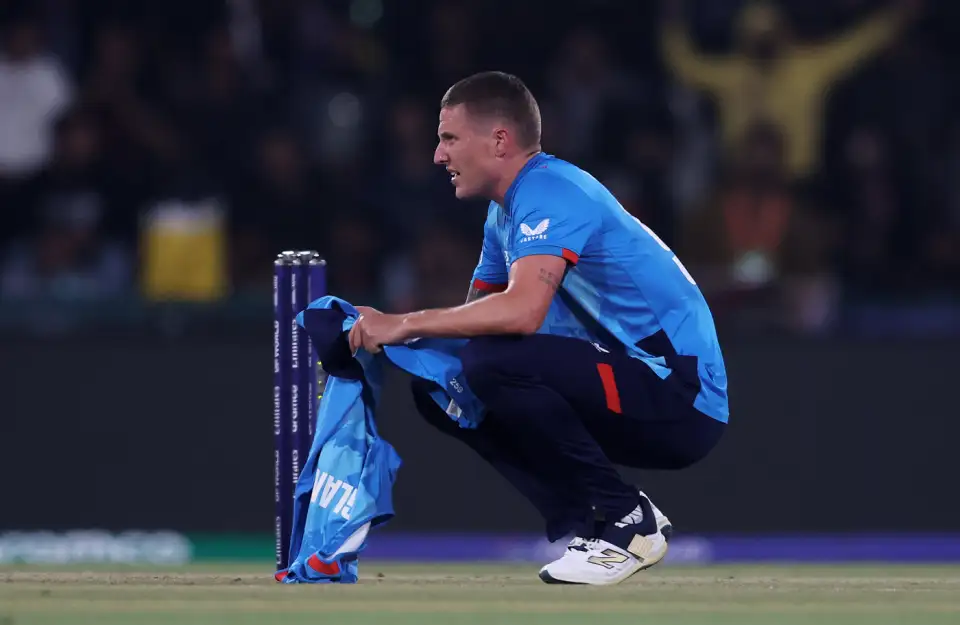Nidahas trophy is an important tournament for Bangladesh, but...


Just a few years ago, a series like the Nidahas trophy might
not have taken place like the way it is now. Indeed, Sri Lanka might have just
invited India to play a three match ODI or T20I series and get it done with.
The rise of Bangladesh in the recent years, however, have
forced them into the reckoning. After three emphatic years at home under
Chandika Hathurusingha, the Tigers became renowned as a formidable team in
their own backyard.
Most of the credit for Bangladesh’s glory was placed on
captain Mashrafe Mortaza’s shoulders, but if the recent losses to Sri Lanka are
anything to go by, it has to be added that Hathurusingha perhaps played a
bigger role than the Narail Express.
The influence of Hathurusingha
Chandika Hathurusingha was criticized for many things during
his time as the coach of the Bangladesh national team. For starters, he rarely
ever watched the domestic circuit of the country and mainly chose players that
he thought were talented.
And then there were complaints about his authoritarian
nature. In his last phase as the coach of Bangladesh, most fans wanted to see
the back of him as he fell out with quite a few senior players. But now, many
of them perhaps miss him.
They say that you don’t understand the value of something
unless it is no longer with you. This has been the case with Hathurusingha as
the fans now realize what kind of a master tactician he is. He instilled a
strong mentality in the players and backed the ones he believed in, no matter
what.
After losing the first ODI against South Africa at home in
2015, a typical Bangladesh would have lost the series 3-0. They were, however,
not a typical Bangladesh as they came back and won the next two games to win
their first ever series against the mighty Proteas.
And now that he is with Sri Lanka, they look like a
rejuvenated unit. The same bunch of players that were humiliated all throughout
2017 came to Bangladesh and beat the mighty Tigers almost as though they were
cats.
This is what Hathurusingha does; he makes a team believe in
themselves.
Apart from that, he is a master tactician that finds the
weaknesses of the players in the opposition team and uses it against them.
Importance of the Nidahas
For India, this is perhaps not much of a prestigious event.
After all, they have rested their star players Virat Kohli and Jasprit Bumrah,
but the case is entirely different for Bangladesh. The Tigers endured a tough
time in their last two series as they lost to both South Africa and Sri Lanka.
Losing to South Africa in their own backyard was expected,
but not having won a single game in the series was something that hurt the fans
the most. Then came Sri Lanka’s tour of Bangladesh.
Sri Lanka have come to Bangladesh quite a few times, but
this time it meant something special: they came with Bangladesh’s
recently-departed coach Chandika Hathurusingha. A lot of hype was generated
around and the Tigers gave the fans a lot of joy by winning the first three
games emphatically, but it all came crashing down after that.

They subsequently lost the tri-nation final, the Test series
and the T20I series to Sri Lanka and will now fly across the Indian Ocean to
take on Sri Lanka and India—in what should be a very important tour for them.
Right now, the morale is down and the fans are displeased.
Winning the Nidahas tri-series, however, will change all that since arch-rivals
India are also in the tournament. And obviously, winning against Sri Lanka in
their backyard would be an instant revenge for what they did in Bangladesh.
The coach conundrum
With no-one new coming in to replace Chandika Hathurusingha,
the Bangladesh Cricket Board have bequeathed the head coach’s role to West
Indian legend Courtney Walsh.
Walsh was already working in the capacity of a bowling coach
for the Tigers, but will now have complete control of the coaching decisions
for the tour. While this might seem like a make-do attempt on the outside,
putting Walsh as the head coach could actually turn out to be a great decision.
For starters, this is a man with invaluable experience and
shared the dressing room with some of the finest West Indian cricketers of all
time and, as a result, can instil strong mental ethos on the players on a
broader scale.
Secondly, Walsh was famous for his beastly fitness. Indeed,
he kept bowling fast for a very long span of time, so long that perhaps no
speedster can boast about such a feat. The ability to play with such
consistency requires near-unbreakable mental strength. Once again, that will be
priceless for the players.
This decision by the BCB seems like a good one, but their
selection policy might go on to hurt them.
Absurd selections
Earlier today, Bangladesh announced the squad for the
Nidahas trophy and it raised some eyebrow. The selection of Imrul Kayes and
Sabbir Rahman, in particular, caused a stir. The former has played in 14
innings and has only 119 runs to show for. His average stands at a horrendous
9.15 while he also has four ducks under his belt.
Chief selector Minhajul Islam Nannu, however, defended the selection
of Kayes, saying: "He is included as our third opener. We want someone who
is good against fast bowlers and because he is playing Tests he is expected to
be good against pace bowlers. There will be lot of pace bowlers in those
conditions so we picked him as the third opener. We also considered his
experience at international level."
This logic borders on absurd. The first requirement of T20s
is to be able to play at a quick rate, something which Kayes is not capable
of—and he has repeatedly shown that.
The internet is a place filled with a plethora of fake
quotes. One of them, which is attributed to Einstein reads: Everyone is a
genius, but if you judge a fish by its ability to climb a tree, it will live
its whole life believing that it is stupid.
Imrul Kayes is an elegant player, a Test batsman
of sorts. Playing him in the shortest form of the game not only hurts the team,
but also the player. Hence, his selection is somewhat inscrutable regardless of
what Minhajul Islam says.
The BCB should have, instead, looked at someone like Anamul Haque Bijoy or Abdul Mazid as the third opener. Both of these players are playing extremely well in the ongoing Dhaka Premier League and while it might be a 50-over competition, the way they have batting there has been way better than how Imrul Kayes has done in the same tournament thus far.
Heck, even Afif Hossain would have been a better choice. In fact, it would have been logical to pick him given that he got a solitary game to prove his worth, which is never enough. Selecting him for the first T20I was a wrong decision, but subsequently dropping him for his poor performance was an even worse decision.
And then there is the case of Sabbir Rahman. The
right-handed batsman is currently facing a ban from domestic cricket and can’t
play in it for the next five months. He has, however, been a regular member of
the national squad despite his ban and that also makes a little sense.
"If you see the T20 record of last one year you will
find that he is our highest scorer in this format," Abedin said. "In
that sense he has lot of experience. That's why we have included him and he is
playing in the PSL, just hope he returns to form over there."
First of all, Sabbir ranks third in the list of the most
runs in T20Is since 2017. In 8 innings, he has made 142 runs at an average of
17.75. This is hardly ground-breaking and it also reflects how poor Bangladeshi
batsmen have been in the format.
On top of that, Sabbir hasn’t been in good form for a long
time. In the last one year, he has made only two scores over 50 in limited
overs. His average in ODIs since 2017 is 20.68 from 17 innings. In that time,
he has scored only 331 runs.
Granted, most of his innings in the past year have been at
number 6 or 7, but the job of a batsman playing at 6 or 7 is to finish games
for his team, something that he has struggled to do as well.
Bangladesh need a good result
The rest of the squad, however, looks good. The inclusion of
Nurul Hasan Sohan, in particular, is an inspired choice.
Captaining Sheikh Jamal Dhanmondi in the Dhaka Premier
League, the wicketkeeper-batsman has made three 50s and one century in just six
games. All of those scores have come from the number six position, making him
the perfect foil for that role.
While Imrul Kayes is going to be the backup, Sabbir Rahman
will almost certainly be in the playing XI—and there is a good chance that his
place in the XI will be at the expense of Sohan since Mushfiqur Rahim is an
automatic choice for the wicketkeeper role.
At the end of the day, it is all about the application on
the field. Past doesn’t matter when players set foot on the ground, but the
responsibility of the management is to put their most in-form players on the
pitch because that provides the best chance to win.
And winning the Nidahas is vital for Bangladesh as it would
signal towards a positive future—one where the fans can dream of achieving
something big even without Chandika Hathurusingha.




